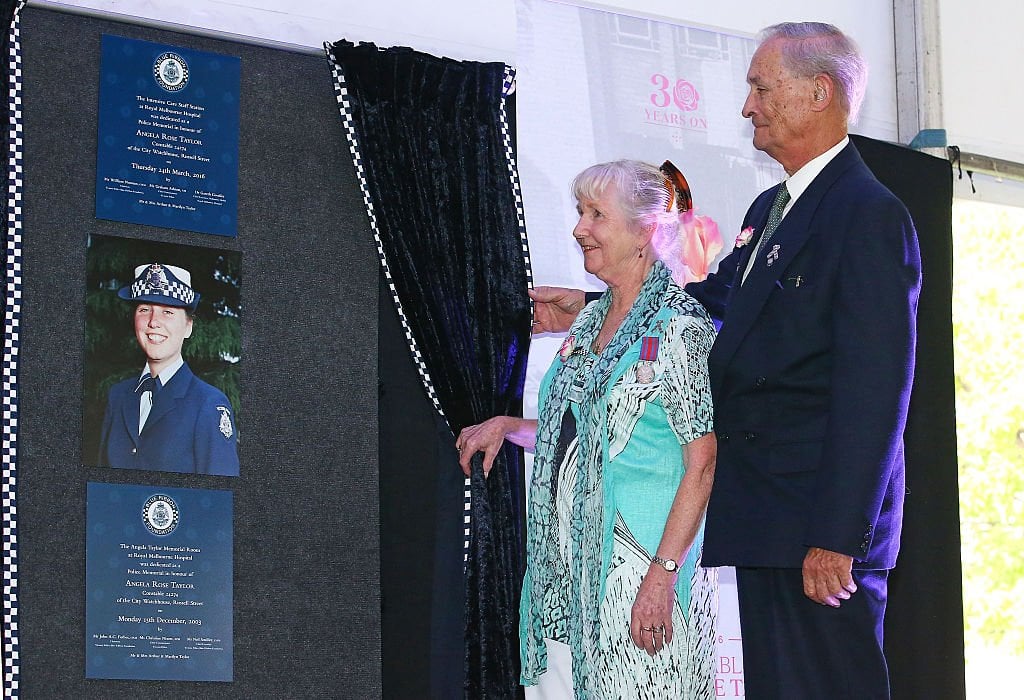
On Thursday March 27, 1986, Constable Angela Taylor lost a coin toss.
She and her colleague were stationed at the watch house police cells next to the Melbourne Magistrate's Court in Russell Street. As it neared lunchtime, it was time to decide who would trek across the road to the police headquarters and the police canteen to pick up something to eat.
Accepting her defeat, at 1pm Angela made her way to the traffic lights and crossed the road, metres away from a Holden Commodore parked illegally right outside the building.
Seconds later, it exploded.
The car was packed with 60 sticks of gelignite, and it erupted into a fireball at exactly 47 seconds past the hour.
The damage caused was extensive.
"One side [of the bomb] shot out flames, and the other side shot out shrapnel. The car bomb had been laced with spanners and nails and any metal they could get their hands on - so it's like being hit with a machine gun," Vikki Petraitis, author of The Russell Street Bombing, told Mamamia's True Crime Conversations.
Listen to True Crime Conversation on Melbourne’s First Terror Attack. Post continues.
Russell Street was strewn with bits of twisted metal, plumes of smokes, spot fires and scores of injured people. For the people of Melbourne, the attack was beyond belief.
Sergeant Yeoman told The Age, "The court was still sitting and we just heard an almighty bang. I raced outside and it was just a scene of carnage – there was a car on fire, there was glass everywhere, rubber all over the place and people were running and screaming. It was like nothing else I've ever experienced."



